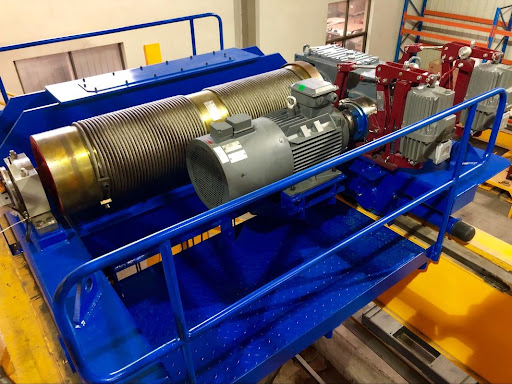Guide
How to Choose the Best Hoist or Winch

Selecting the right lifting or handling equipment for your application requires careful consideration. Whether you are buying a hoist or winch, you need to make sure that the equipment you purchase is suitable for your needs and can efficiently, reliably and safely cope with the workload on your site. Read on to find out some of the most important things to consider…
1. Manual or powered equipment?
One of the first things you might be wondering is whether you should opt for a manual hoist or winch – or if an electric, air or hydraulic model would be more suitable for your needs.
Ultimately, the power type you choose will depend on many different factors like the average weight of the load, the height or distance it is being transported, and the general operating environment. For example, manual equipment is often lightweight and easy to transport, but it may be unsuitable for hoisting or winching very heavy loads, or where sustained operation is required over an extended period.
If you decide to go down the powered route, carefully consider the operating environment. For example, electrically powered equipment is a great choice for many sites, but it may be unsuitable where there is a risk of an explosion due to the heat that is generated while it is being operated. Furthermore, you may not be able to use it if there is no easy access to electricity. Air or hydraulic equipment provides an efficient alternative in many environments, but again they aren’t always the best option.
2. Loading capacity and duty cycle
Another very important thing to think about is the load capacity you require. It is essential to ensure that any equipment has been engineered to handle the Mean Effective Load (MEL) you plan to hoist or winch on a regular basis, and that it can properly handle the heaviest load you are going to be dealing with.
In addition, you’ll want to carefully research the duty cycle of the equipment and again ensure that it fully meets your requirements. It is imperative that the hoist or winch has been designed to perform the required number of hoisting or winching operations each hour and day. In addition, think about the height or distance you will be transporting the load. Ultimately, buying a hoist or winch with an insufficient duty cycle may result in reduced reliability, unexpected breakdowns, or even compromised safety and/or performance.
3. A hoist or a winch?
Another key consideration is actually the type of equipment you buy. As an example, don’t expect a winch to also double as a hoist, as the former is built to pull objects while the latter is designed to lift them.
Choosing the Best Hoist or Winch
Taking the time to carefully consider your requirements and then researching suitable products will help you purchase the best possible solution for your needs. Talking to an expert supplier of hoisting and winching equipment can really help in this regard, as they will be able to assess your requirements and advise on the optimum solution for your individual application.




















